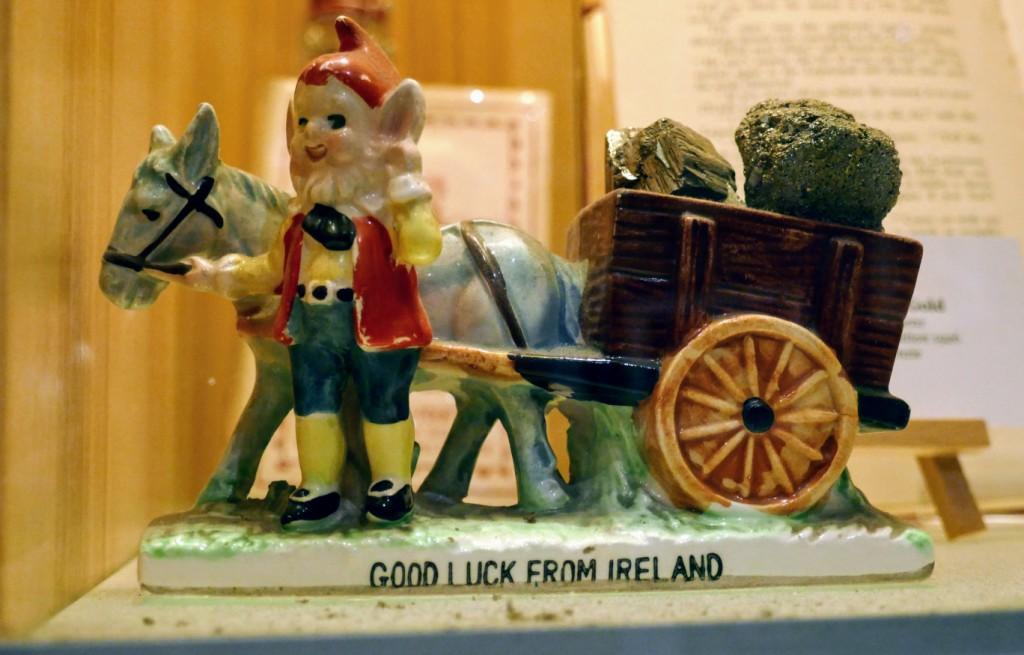Continuing from my previous posts here and here, these are four more Dublin museums I visited in October 2019.
1) National Museum of Ireland – Archaeology
The National Museum of Ireland – Archaeology is delicious. Irish Bronze Age gold, prehistoric tools, Viking Ireland, Medieval reliquaries, Iron Age bog bodies, etc., etc.
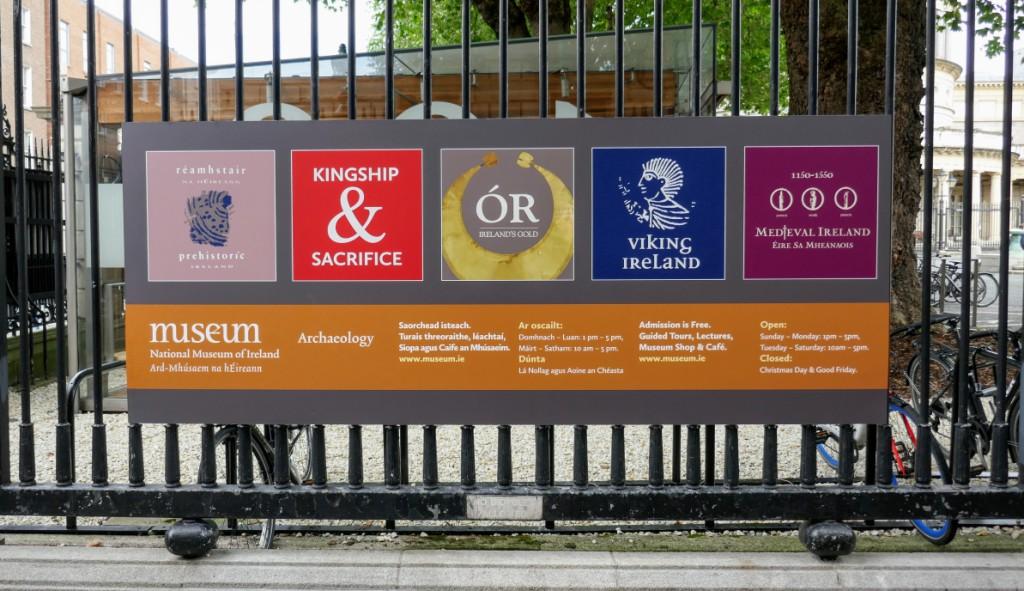
The silver-gilt Tara Brooch is one of the most famous artifacts in the museum. It’s displayed so that you can see and appreciate the decoration on both sides.
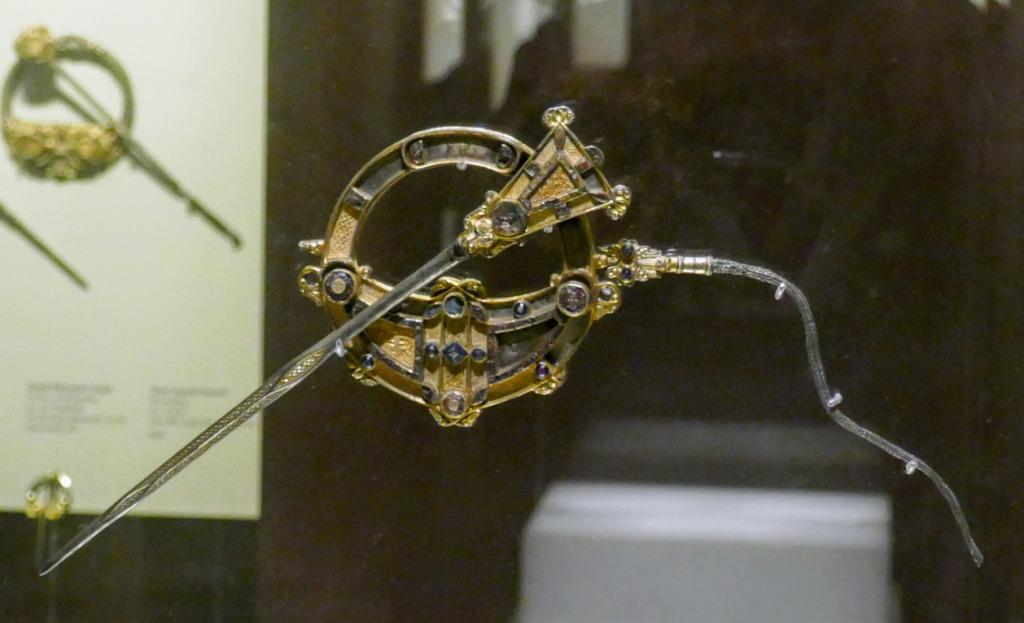
From the museum’s website:
This brooch was found not in Tara but near the seashore at Bettystown, Co. Meath, in 1850. Its provenance was attributed to Tara by a dealer in order to increase its value.
It is made of cast and gilt silver and is elaborately decorated on both faces. The front is ornamented with a series of exceptionally fine gold filigree panels depicting animal and abstract motifs that are separated by studs of glass, enamel and amber. The back is flatter than the front, and the decoration is cast.
The motifs consist of scrolls and triple spirals and recall La Tène decoration of the Iron Age.
A silver chain made of plaited wire is attached to the brooch by means of a swivel attachment. This feature is formed of animal heads framing two tiny cast glass human heads.
Along with such treasures as the Ardagh Chalice and the Derrynaflan Paten, the Tara Brooch can be considered to represent the pinnacle of early medieval Irish metalworkers’ achievement. Each individual element of decoration is executed perfectly and the range of technique represented on such a small object is astounding.
2) GPO Witness History Museum
Walking up O’Connell Street in Dublin, surrounded by McDonalds and Burger Kings, it’s easy to forget that a momentous event in Irish history occurred right here, and not really that long ago.
GPO Witness History Museum explores modern Irish history, including the 1916 Easter Rising in which the General Post Office (GPO) on O’Connell Street became the headquarters for the men and women who sought, through armed rebellion, to win Irish independence from Britain.
One of the first photographs you see on entering the exhibition shows the aftermath of the rebellion, taken a hundred years ago where you are standing.
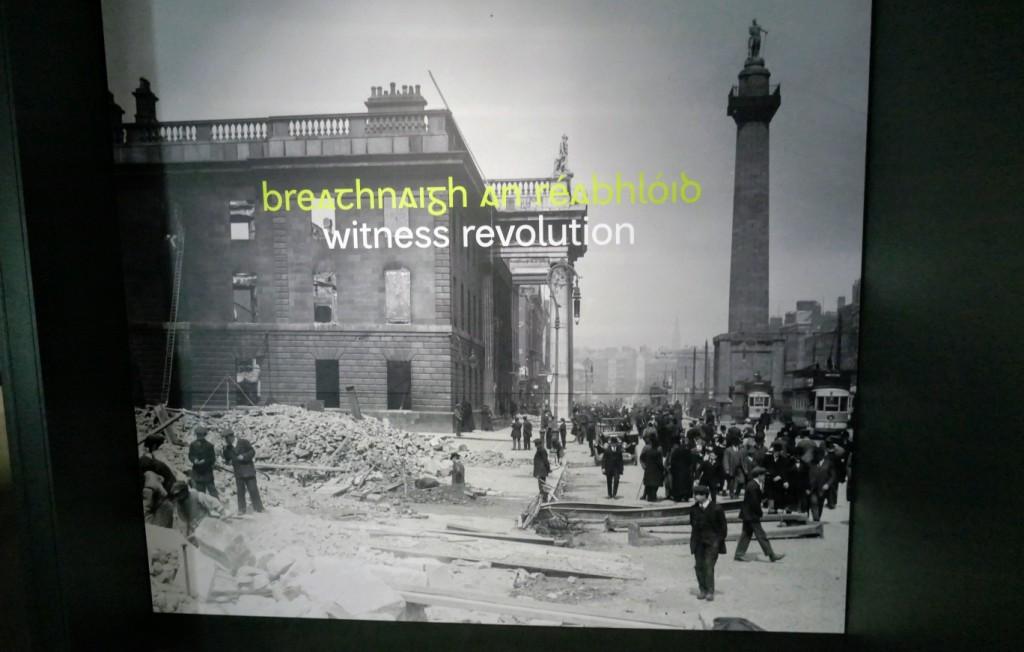
Later in the exhibition is a digital memorial to those who served in the 1916 Rising, amongst whom is a McCabe. I know (or I’m pretty sure) that the particular Kevin Joseph McCabe is no relation of mine, but I thought it might be interesting to see if I could find out anything about him, how he came to be in the Rising, and what happened to him afterwards.
Much to my amazement, Kevin Joseph McCabe’s military pension record is online in the Irish Department of Defence’s Military Service Pensions Collection. Thank you to the librarians and archivists who accomplished this! There are over one hundred pages of scanned records in his file, including handwritten notes and letters. Fascinating.
Keven Joseph McCabe, a Dubliner, lived from 1889 to 1970. Amongst other service, Mr. McCabe joined the Irish Republican Brotherhood (IRB) in 1913, was a gun runner keeping 60 shotguns in his house, took part in the Rising at the GPO from Easter Monday until he was arrested by the military on Thursday, was interned and released, and was later on duty with the IRA (Irish Republican Army) with a revolver at Croke Park on Bloody Sunday in 1920.
What he did after that I do not know, though I might be able to find out. He had been a watch maker for a period in Galway before 1920, so I wonder if that isn’t what he did as a trade later on.
When he died in 1970 he lived in north Dublin, quite near to Glasnevin Cemetery, actually. And oh my goodness, if he isn’t buried in Glasnevin Cemetery, according to their records.
His wife, Mrs. Louisa Elizabeth McCabe, received a widow’s pension of £52.20 per year until she died in 1976. She is also buried in Glasnevin Cemetery.
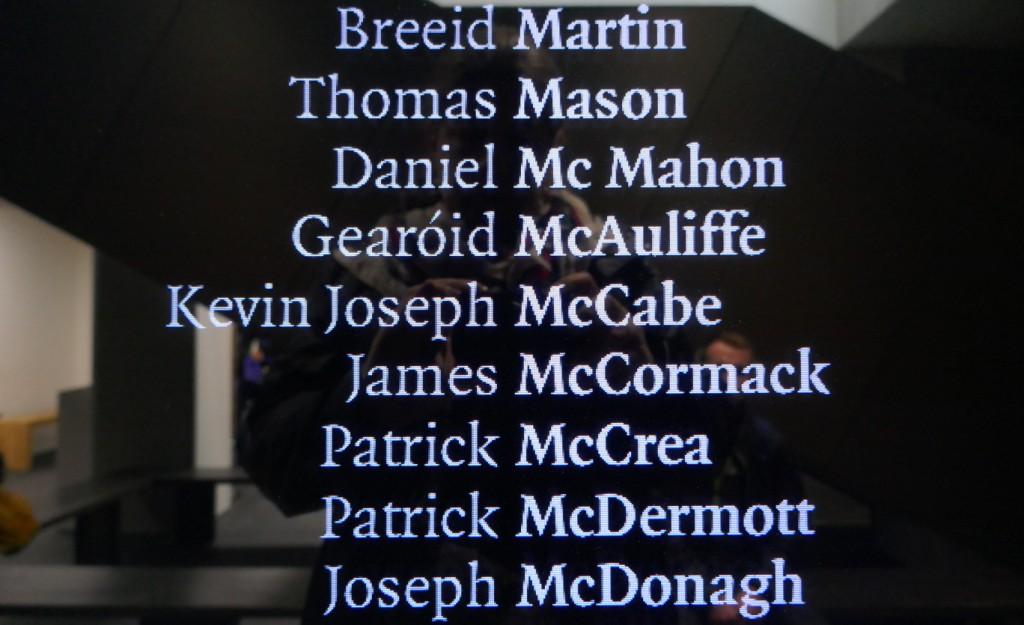
3) Kilmainham Gaol
Kilmainham Gaol, built in 1796, was the second prison I visited this year (the other being Kingston Penitentiary).
Kilmainham is best known as the site where leaders of the 1916 rebellion were detained, and later executed. It’s a serious and complex story and the jail tour and museum tell it well.
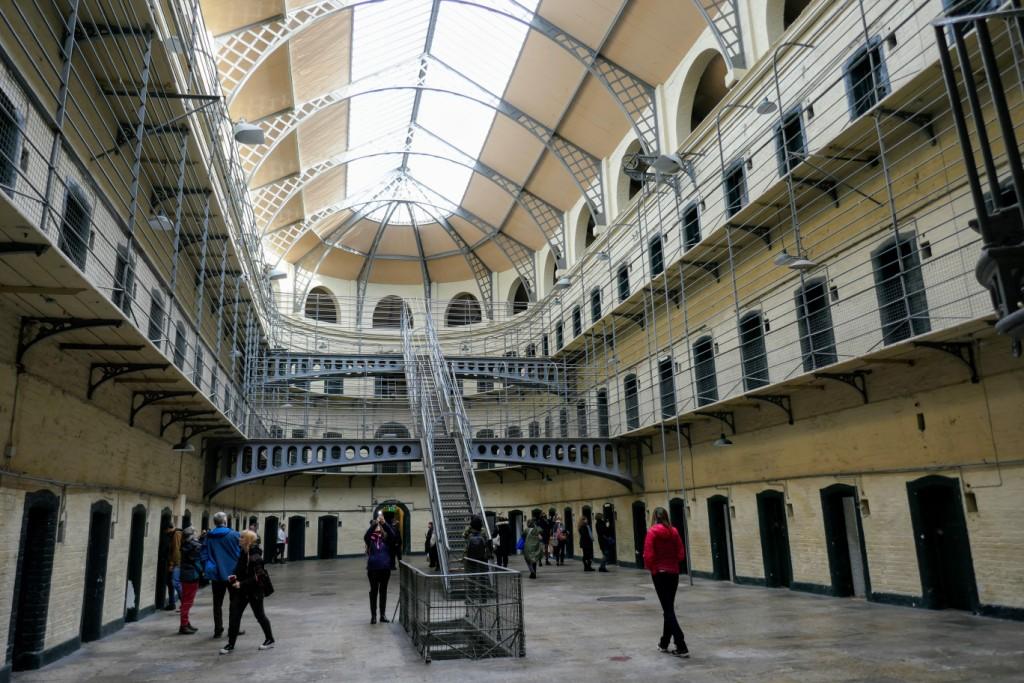
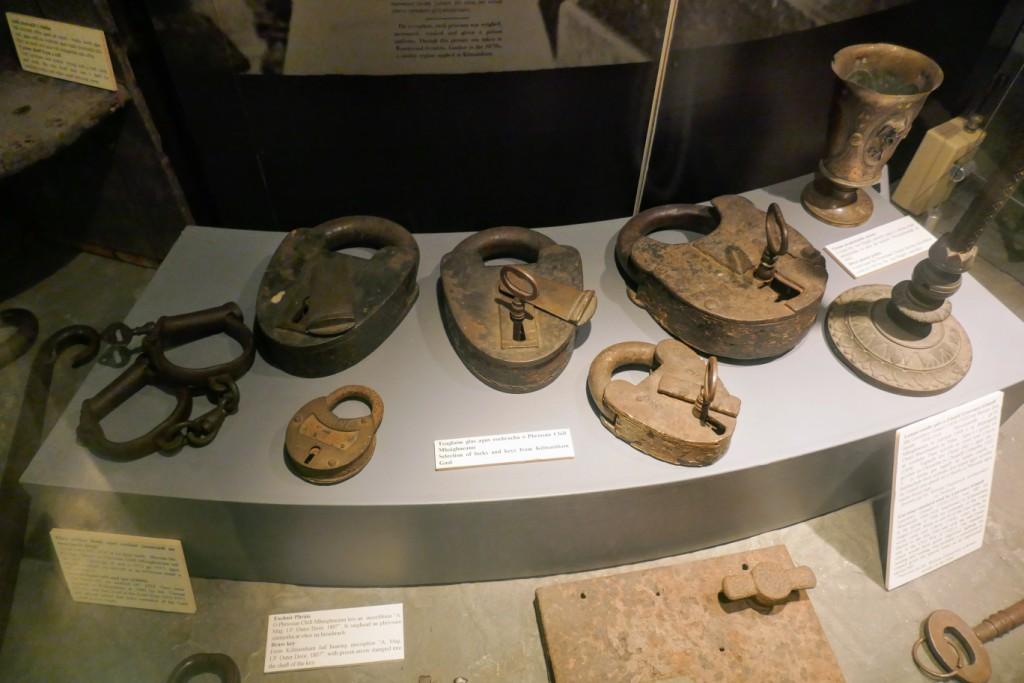
4) National Leprechaun Museum of Ireland
On a much lighter note, I’m so glad I went to the National Leprechaun Museum of Ireland. It wasn’t the least bit of a tourist trap, but was instead a wonderful experience of Irish storytelling, learning about mythical Ireland. It was very fun (and would be even more so if you had children with you)!
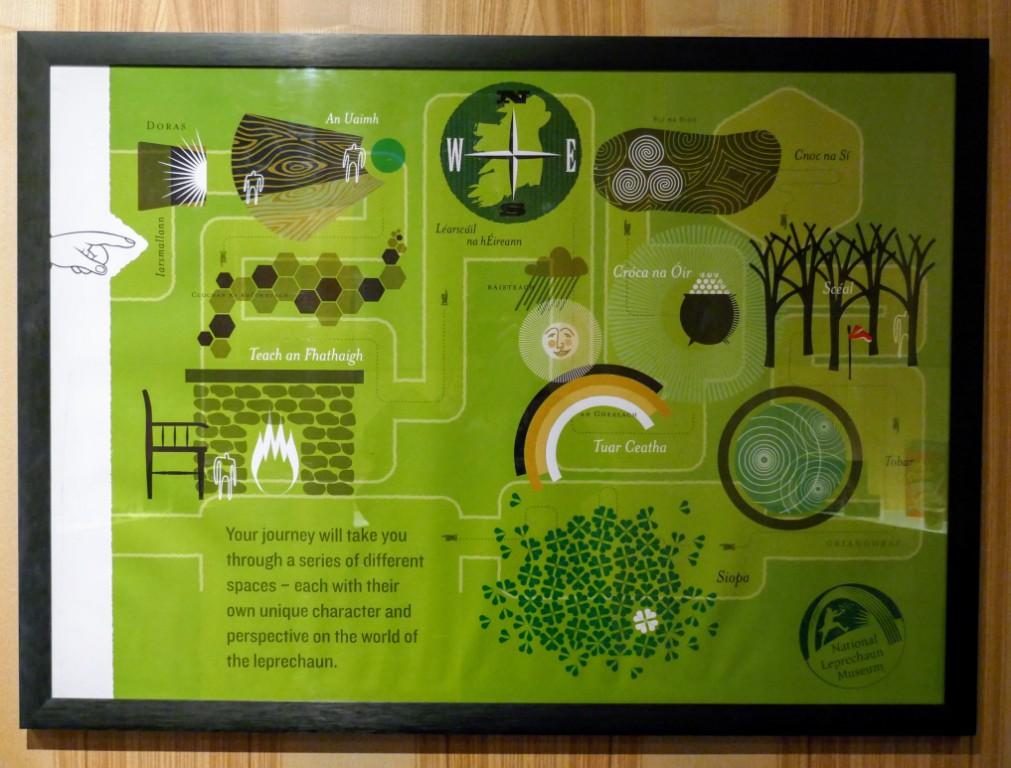
My favourite space was the beautifully lit Giants Causeway space.
These four Dublin museums are nos. 94 to 97 in my #100museums challenge (see 100 Museums Challenge).

